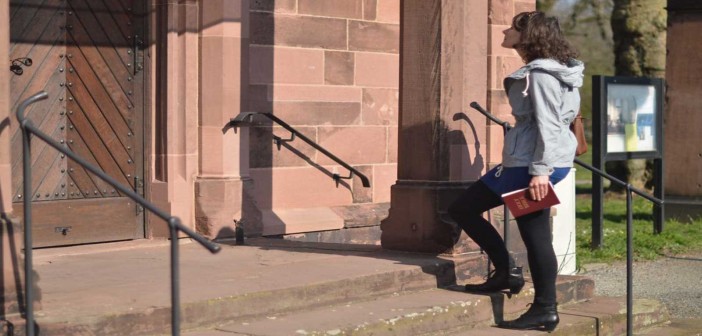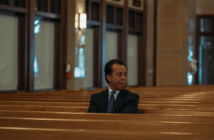Gender has been a major factor in the young clergy gains. In the last ten years, the percentage of women among young elders has increased from 31 percent in 2005 to 41 percent in 2015, the highest ever.
The report covers elders, deacons, and local pastors. Elders are ordained to a ministry of Word, Sacrament, Order and Service. They itinerate and receive an appointment annually by the bishop. Deacons are ordained to a ministry of Word, Service, Compassion, and Justice to both the community and a congregation. Deacons are not required to itinerate, nor guaranteed an appointment. A local pastor is licensed and appointed to perform the duties of a pastor in a particular setting. They are not required to itinerate, nor guaranteed an appointment.
Download this video free from Vimeo.
Growth in Young Clergy All Among Women
The number of young clergy in the United Methodist Church reached its low point in 2005, especially among elders. The number of under-35 elders had declined to 850 or 4.69 percent of active elders. Growth among young elders has been slow but relatively steady over the past ten years. In 2015, there are 986 young elders that comprise 6.56 percent of the pool of active elders, a pool now smaller by over 3,000 elders.
Gender has been a major factor in the young clergy gains. In the last ten years, the percentage of women among young elders has increased from 31 percent in 2005 to 41 percent in 2015, the highest ever. In fact, there are actually fewer young male elders now than in 2005 with all the increases coming from young female clergy.
| Young Elders by Gender | ||
| Men | Women | |
|---|---|---|
| In 2005 | 587 | 263 |
| In 2015 | 582 | 404 |
| Change | (5) | 141 |
Deacons, on the other hand, have traditionally been predominantly female. Yet, even among deacons, the percentage of women has increased. Since 2012 the percentage of female deacons has increased each year from 68 percent in 2012 to 80 percent in 2015. Among local pastors, the young cohort is increasing but primarily among men, with the proportion of young female local pastors continuing to represent about a quarter of the group.
Elders Older Despite More Young Elders
Elders between ages 55 and 72 comprise 55 percent of all active elders, the highest percentage in history. This age cohort represented only 30 percent of active elders as recently as 2000. Unfortunately, the modest gain in the presence of young elders was offset by a decline in the percentage of elders aged 35 to 54. This mid-age group continues to shrink, from 65 percent of all active elders in 2000 to 38 percent in 2015.
Regional Differences
For many years the highest concentrations of young clergy elders have been in the Southeastern and South Central Jurisdictions. For example, the conference with the highest percentage of young elders is Texas with almost 12 percent, and the conference with the largest number of young elders is Virginia with 60. This regional trend continues in 2015, but the Dakotas Conference from the North Central Jurisdiction returned to the top ten conferences in the percentage of young elders. Also of significance, there are five “trending” conferences that include at least one conference each from the North Central and Western Jurisdictions in which there have been significant gains among young clergy in the past three years.
Much more information is available in the complete Clergy Age Trends report, which is available for download free of charge. The full report includes detailed data for every annual conference.
Related Resources:
- Clergy Age Trends 1985-2015
- The Crisis of Younger Clergy by Lovett H. Weems, Jr. and Ann A. Michel
- Why Young Clergy Matter
- Ways Established Church Leaders Can Work with Young Clergy
- Suggestions for Churches with a Young Pastor
- Suggestions for Churches with a Single Pastor
- Suggestions for Churches with a Clergywoman







